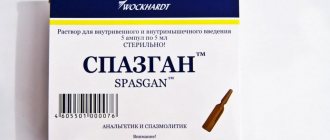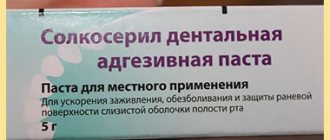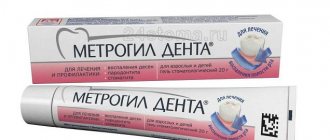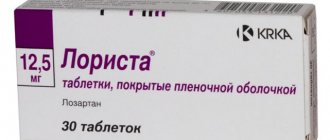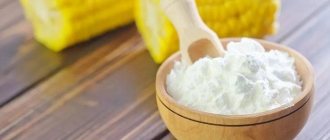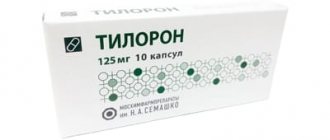Pharmacological properties of the drug Voluven
Voluven is a solution of hydroxyethyl starch (HES), which is obtained from amylopectin and is characterized by molecular weight and degree of substitution. For Voluven, the average molecular weight is 130,000 Da and the degree of substitution is 0.38–0.45 (this means that for every 10 glucose residues of amylopectin there are about 4 hydroxyethyl groups). Hydroxyethyl starch is structurally related to glycogen, which explains its high tolerance and low risk of anaphylactic reactions. Voluven is characterized by high stability of the solution and does not flocculate during temperature fluctuations. The pharmacokinetics of hydroxyethyl starches is complex and depends on the molecular weight and degree of molecular substitution of the substance. After intravenous administration of hydroxyethyl starches, molecules smaller than 60,000–70,000 Da (the threshold for renal filtration) are quickly excreted in the urine, and larger molecules, including Voluven, are broken down by plasma α-amylase, after which they are also excreted by the kidneys. The average molecular weight of Voluven in the first minutes after infusion in blood plasma in vivo 70,000–80,000 Da and remains above the renal filtration threshold throughout the entire treatment period. 30 minutes after the end of the Voluven infusion, its concentration in the blood plasma is 75% of the maximum, and after 6 hours it decreases to 14%. With a single administration of 500 ml of Voluven, hydroxyethyl starch molecules are completely eliminated from the body after 24 hours. With daily administration of 500 ml of 10% HES 130/0.4 solution to volunteers for 10 days, no significant accumulation of the substance in the blood plasma was detected. Impaired renal function did not affect the half-life in the final elimination phase and the maximum concentration of HES in the blood plasma. With a CC of 30 ml/min, 59% of the administered dose of the drug was excreted in the urine, and with a CC of 15–30 ml/min - 51%. Compared to HES 200/0.5, Voluven has improved pharmacokinetics (metabolism and excretion are optimized) while maintaining its plasma replacement effect. Improved pharmacokinetic characteristics make it possible to weaken the effect of the drug on the hemostatic system with repeated administration of high doses and reduce the accumulation of hydroxyethyl starch in tissues.
Prices in pharmacies and online pharmacies in Moscow
| Drug name | Series | price, rub. |
| Voluven™, solution for infusion 6%; plastic bottle (bottle) 500 ml, cardboard box (box) 10; EAN code: 4605163000711; No. P N011337/01, 2012-01-30 from Fresenius Kabi Deutschland GmbH (Germany) | 20112 (until 01/01/2017) | 3637.00 |
| Voluven™, solution for infusion 6%; container 250 ml, cardboard box (box) 30; EAN code: 4607085480541; No. P N011337/01, 2012-01-30 from Fresenius Kabi Deutschland GmbH (Germany) | 3A0380111 (until 01/01/2015) | 7296.00 |
| Voluven™, solution for infusion 6%; plastic bottle (bottle) 500 ml, cardboard box (box) 10; EAN code: 4605163000711; No. P N011337/01, 2006-11-24 from Fresenius Kabi Deutschland GmbH (Germany) | 3641.00 | |
| Voluven™, solution for infusion 6%; plastic bottle (bottle) 500 ml, cardboard box (box) 10; EAN code: 4605163000711; No. P N011337/01, 2006-11-24 from Fresenius Kabi Deutschland GmbH (Germany) | 3904.00 | |
| Voluven™, solution for infusion 6%; plastic bag (pouch) “Friflex” 250 ml, cardboard box (box) 15; No. P N011337/01, 2006-11-24 from Fresenius Kabi Deutschland GmbH (Germany) | 7603.00 |
Use of the drug Voluven
The drug is intended for long-term intravenous infusion for adults and children of any age, starting from the neonatal period. An initial dose of 10–20 ml should be administered slowly and the patient should be closely monitored due to the possibility of anaphylactoid reactions. The daily dose and infusion rate depend on blood loss, maintenance or restoration of hemodynamics, and blood dilution (hemodilution). The maximum daily dose is 50 ml/kg body weight per day, which corresponds to 3g/kg/day (about 3500 ml/day for a body weight of 70 kg). Voluven is used to replenish blood volume:
- in adults, the maximum daily dose is 50 ml/kg body weight;
- for children aged 10–18 years, the daily dose is 33 ml/kg;
- in children aged 2–10 years, the daily dose is 25 ml/kg;
- in newborns and children under 2 years of age, the daily dose is 25 ml/kg.
Voluven can be administered repeatedly over several days depending on the patient's needs. The duration of treatment depends on the duration and severity of hypovolemia, hemodynamics and hemodilution. Avoid mixing the drug with other substances. If in exceptional cases this is required, then the compatibility of the drugs should be checked (based on the appearance of turbidity or sediment), observe aseptic rules when mixing and ensure good mixing. Use the drug immediately after opening the bottle. Application is possible if the solution is transparent and the packaging is intact.
Pharmacodynamics
Voluv™ is a solution of HES, which is obtained from corn amlocate, a waxy layer characterized by the molecular mass of the corn. For Voluva™, the average molecular weight is 130,000 Da, and the average is 0.4, which means that 10 glucose residues of amloct contain 4 hydroxyl groups. HES is structurally related to glycogen, which will explain the high tolerance of zky rsk aalactic cancers. Voluv™ are distinguished by the high stability of the solution of localization dates in temperature flasks.
Voluv™ is a zoochemical laser solution, thanks to the first intravenous injection, the volume of intravascular fluid will be absorbed into the volume of Voluv™.
Special instructions for the use of Voluven
As with the introduction of other solutions, when carrying out plasma replacement therapy, it is necessary to avoid fluid overload. The risk of overhydration especially increases in the case of heart failure or severe renal impairment. When treating such patients, the indications for infusion should be clarified. In cases of severe dehydration, preference should be given to saline solutions. It is important to administer adequate fluids and regularly monitor kidney function and fluid balance. Plasma electrolytes should be monitored. Doses for children should be selected individually in accordance with the child's needs for colloids and taking into account the severity of the underlying disease, hemodynamic parameters and water balance. During pregnancy and breastfeeding. Animal studies have not revealed direct or indirect adverse effects on pregnancy, embryo/fetal development, childbirth and postnatal development. Also, no evidence of teratogenicity was observed. Voluven can be used during pregnancy only in cases where the expected benefit from treatment outweighs the possible risk to the fetus.
Interaction
For those whose blood groups have been established, be aware that injecting large volumes of HES can cause agglutative reactions to produce false results for the blood group.
IV HES may lead to elevated serum amlase levels. This ect should be considered as an arush of the UCC of gastric zhelz, and as a result of the formation of a complex of HES with amlaza with an oslduy delay by removing the chrz point. Whenever such interaction occurs, there are calls. Prarat vlyat and raising the level of glucose in the blood serum of donkeys with hydrolza α-amlase can be used in patients with diabetes mellitus.
Voluven
Release form, composition and packaging
Solution for infusion 6% 1 l hydroxyethyl starch 60 g osmolarity 308 mOsm/l titratable acidity less than 1 mmol NaOH/l pH 4.0-5.5. Excipients: sodium chloride 9 g/l (equivalent to the content of Na+ 154 mmol/l and Cl- 154 mmol/l), water for i.
Clinical and pharmacological group: Plasma replacement drug.
pharmachologic effect
Plasma replacement drug. It is a solution of hydroxyethyl starch (derived from amylopectin) with an average molecular weight of 130,000 daltons and a degree of substitution of 0.4; this means that for every 10 glucose residues of amylopectin there are 4 hydroxyethyl groups.
The nature of C2/C6 substitution affects the volemic effect of the drug. For Voluven this figure is 9:1, i.e. hydroxyl groups are located in the more stable position C2 9 times more than in C6. If there are ≥ 8 hydroxyl groups at the C2 position, then the volemic effect of hydroxyethyl starch (HES) is more stable than that of HES with this indicator < 8. HES is structurally related to glycogen, which explains its high tolerance and low risk of anaphylactic reactions. Voluven is characterized by high solution stability and does not flocculate during temperature fluctuations. In children under 2 years of age who underwent surgery (excluding cardiac surgery), the tolerability of Voluven during surgery was comparable to the tolerability of 5% albumin.
Pharmacokinetics
Distribution and metabolism
After intravenous administration of the drug, the molecules of the active substance are broken down by α-amylase in the blood plasma, after which they are quickly excreted by the kidneys. The average molecular weight of Voluven in the first minutes after infusion is 70,000-80,000 daltons in blood plasma in vivo and remains above the renal filtration threshold throughout the entire treatment period. 30 minutes after the end of the Voluven infusion, the concentration of the active substance in the blood plasma is 75% of the maximum, and after 6 hours it decreases to 14%. Even after daily administration of 500 ml of a 10% solution of HES 130/0.4 to volunteers for 10 days, no significant accumulation of the substance in the blood plasma was detected.
Removal
After administration of 500 ml of Voluven, plasma clearance is 31.4 ml/min. After a single administration of 500 ml of Voluven, the half-life in the blood plasma in the first elimination phase is 1.4 hours, in the second phase - 12.1 hours; HES molecules are completely eliminated from the body after 24 hours.
Pharmacokinetics in special clinical situations
In patients with stable renal impairment (from mild to severe) and creatinine clearance <50 ml/min, the AUC value was moderately greater (1.7 times) than in patients with creatinine clearance >50 ml/min at the same dose of the drug (500 ml). Impaired renal function did not affect T1/2 in the final phase and the Cmax value of HES in the blood plasma. With CC>30 ml/min, 59% of the administered dose of the drug is excreted in the urine, and with CC 15-30 ml/min - 51%.
Indications
- treatment and prevention of hypovolemia of any origin;
- treatment and prevention of shock;
- acute normovolemic hemodilution;
- therapeutic hemodilution;
- filling the extracorporeal circulation apparatus.
Dosage regimen
The drug is administered by long-term intravenous infusion. The first 10-20 ml of solution should be administered slowly, with careful monitoring of the patient's condition, due to the risk of anaphylactoid reactions. The daily dose and infusion rate depend on the degree of blood loss, maintenance or restoration of hemodynamics and the degree of hemodilution. The maximum daily dose is 50 ml/kg body weight.
To replenish blood volume in adults, the maximum dose is 50 ml/kg/day; in children and adolescents aged 10-18 years - 33 ml/kg/day; in children aged 2-10 years - 25 ml/kg/day; in newborns and children under 2 years of age - 25 ml/kg/day. Voluven can be administered repeatedly over several days, depending on the clinical situation. The duration of treatment depends on the duration and severity of hypovolemia, hemodynamics and hemodilution.
Side effect
Dermatological reactions: with prolonged administration in high doses - skin itching.
- From the laboratory parameters: possible increase in the concentration of serum amylase; when using the drug in high doses, due to the dilution effect, dilution of blood components, a decrease in hematocrit, as well as coagulation factors and plasma proteins is possible.
When HES is administered, coagulation disorders may be dose dependent.
Other: allergic reactions of varying severity.
Contraindications
- overhydration;
- hypervolemia;
- congestive heart failure;
- severe blood clotting disorders;
- intracranial bleeding;
- state of dehydration, when correction of water and electrolyte balance is required;
- severe renal failure with oliguria or anuria;
- use in patients on hemodialysis;
- hypersensitivity to the drug.
Pregnancy and lactation
There are no clinical data on the use of Voluven during pregnancy and lactation. The use of the drug during pregnancy is possible only if the potential benefit to the mother outweighs the possible risk to the fetus. Experimental studies on animals did not reveal any direct or indirect adverse effects on pregnancy, embryo/fetal development, childbirth or postnatal development. No evidence of teratogenicity was observed.
Use for liver dysfunction
Particular caution is required in severe liver failure.
Use for renal impairment
The drug is contraindicated for use in severe renal failure with oliguria or anuria and in patients on hemodialysis.
special instructions
As with the use of other solutions, when carrying out plasma replacement therapy, it is necessary to avoid fluid overload. The risk of overhydration is particularly increased in patients with heart failure or severe renal impairment. In this case, the indications for infusion should be clarified.
In cases of severe dehydration, saline solutions should be preferred. Particular caution is required in case of severe liver failure or blood clotting disorders, incl. in severe cases of von Willebrand disease. It is important to ensure sufficient fluid intake, regular monitoring of kidney function and fluid balance. Serum electrolytes should be monitored.
When treating patients whose blood type is not determined, it should be borne in mind that the administration of Voluven in high doses may affect the agglutination reaction and give false positive results when determining the blood group. An increase in the level of serum amylase with the administration of Voluven occurs as a result of the formation of a complex of hydroxyethyl starch with amylase (and not due to dysfunction of the pancreas) and a subsequent delay in its excretion by the kidneys and through extrarenal routes. This should be taken into account when diagnosing pancreatitis.
Use in pediatrics
The dose for children should be selected individually in accordance with the need for colloids and taking into account the severity of the underlying disease, hemodynamic parameters, and water balance. Voluven should only be used in premature infants after a careful assessment of the risk/benefit ratio.
Overdose
Symptoms: overload of the circulatory system (for example, pulmonary edema).
Treatment: stop administering the drug; if necessary, prescribe a diuretic.
Drug interactions
Avoid mixing Voluven with other drugs. If this is required in exceptional cases, then the compatibility of the drugs should be checked (turbidity, precipitation), aseptic rules should be observed when mixing and good mixing should be ensured.
Storage conditions and periods
The drug should be stored out of the reach of children, in a dry, dark place at a temperature not exceeding 25°C; do not freeze. The shelf life of the drug in freeflex bags is 3 years, in bottles - 5 years. Only use clear solutions in undamaged containers. After opening the bottle or bag, the solution should be used immediately. Unused solution must be destroyed.
VOLUVEN: Pregnancy and lactation
There are no clinical data on the use of Voluven during pregnancy and lactation.
The use of the drug during pregnancy is possible only if the potential benefit to the mother outweighs the possible risk to the fetus.
Experimental studies on animals did not reveal any direct or indirect adverse effects on pregnancy, embryo/fetal development, childbirth or postnatal development. No evidence of teratogenicity was observed.
Side effects
In rare cases, HES may cause a reaction with increased sensitivity at different degrees of severity.
By introducing HES, it is possible to increase the level of alase in the serum, which eats Dagoste pareatta.
Before introducing dry doses of HES, it’s healthy.
In case of dry doses, there may be a swelling effect, which manifests itself as a compressed geatort, as well as protean plaza fator oaglic. In connection with this, during the FZ there may be a compression of Fator VIII Vllebrada. Vreya rovotecheya drge poazatel roll up the island ditch ogt velchatsya. Odao this zeeya zachtello compressed compared to the same pr fz GEK previous fields are restored to a similar level 6 hours after stopping the fz of the drug.
Contraindications
- overhydration;
- hypervolemia;
- congestive heart failure;
- severe blood clotting disorders;
- intracranial bleeding;
- state of dehydration,
- when correction of water and electrolyte balance is required;
- severe renal failure with oliguria or anuria;
- use in patients
- those on hemodialysis;
- hyperchloremia;
- hypernatremia;
- hypersensitivity to the drug.
Indications
- treatment and prevention of hypovolemia of any origin and shock (due to injuries,
- incl.
- spinal injuries with spinal cord damage,
- blood loss,
- burn,
- sepsis,
- multiple organ failure,
- in the postoperative period,
- acute adrenal insufficiency,
- anaphylaxis and other conditions,
- accompanied by the development of collapse);
- acute normovolemic hemodilution;
- therapeutic hemodilution;
- filling the extracorporeal circulation apparatus.
